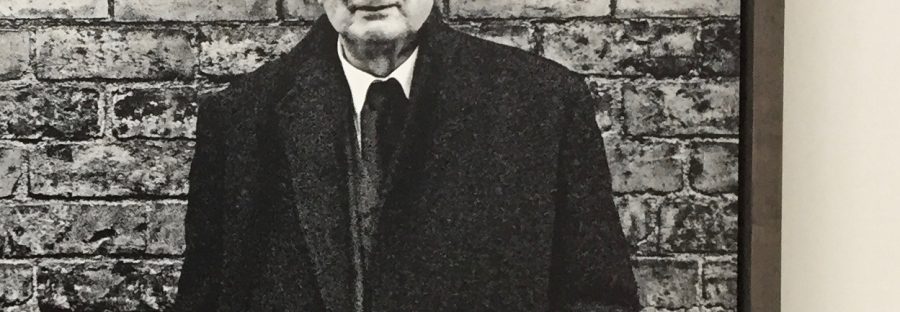EXHIBITION: L.S. Lowry, The Art and The Artist
- NQ reporter Amy Stott reviews The Lowry exhibition at Salford Quays.
Famous for his paintings of ‘matchstick men and matchstick cats and dogs,’ the exhibition of L.S. Lowry’s work at The Lowry, Salford Quays, not only showcases his art, but delves deeper into the life of a man who seemed deeply troubled by the world around him.
The first section of the gallery has a modern and minimalist feel to it. It tells the story of Lowry’s life through vinyl text stickers and photographs, mounted on clean, white walls. The room is a world away from the people in the pictures, as the writing and images of life up North, show that growing up in poverty during Lowry’s lifetime (1887 – 1976) included children suffering from rickets, going to school with no shoes, and households unable to afford curtains.
Further along the walls are photographs of Lowry relaxing in his home and prints of artwork he collected. His favourite artists included Dante Gabriel Rossetti and Madox Brown.
One photograph shows Lowry’s otherwise very plain bedroom, decorated with Rossetti’s drawings, all of which are portraits of women. Some of these include, Mrs William Morris (1870), Aspecta Medusa (1867), and Alexa Wilding (1866).
The second section of the gallery is more traditional, with Lowry’s original work displayed on the walls in extravagant, vintage looking picture frames.
Whilst the gallery is a permanent home to the largest collection of Lowry’s artwork, there are a few pieces on loan from private collections. One of these is a typical Lowry-esque oil painting, Glasgow Docks (1947), on loan from the Richard Green Gallery in London. The painting shows faceless, matchstick figures, bustling through a crowded street with boats in the background. The painting perhaps reflects Lowry’s own personal feelings and where he felt he didn’t fit in in society, as a quote on the wall reads, “All my people are lonely. Crowds are the most lonely thing of all. Everyone is a stranger to everyone else.”
Other paintings and drawings of scenery also suggest Lowry felt alone. This is apparent in an oil painting called A Landscape (1936), which shows a small and rather pathetic looking monument, perched on top of a tall hill. In his industrial landscape pieces, the people are often dwarfed by their surroundings, as the monument is dwarfed by the hill in this particular piece.
Aside from the industrial landscapes Lowry is so well known for painting and drawing, other parts of the gallery are home to some of his more obscure work. These include the bizarre paintings of Little Girl Seen from Front and Back (1964), a pair of paintings of Gill Gosling, whom Lowry became obsessed with after watching the then 14-year-old perform in a play. The girl is expressionless but has a striking resemblance of Hagrid from Harry Potter, with her wild hair drawing focus in this piece.
Towards the end of his life, Lowry developed a fixation with creating erotic art after admitting he’d ‘never had a woman’. Many of these paintings and drawings are hung in the gallery and show ballerinas squeezed into comically small, tube-like corsets, their pointed breasts uncomfortably forced out of the top.
The exhibition allows visitors to see the real human being behind Lowry’s art, as well as the deeper, sometimes darker side of the man holding the paintbrush.


